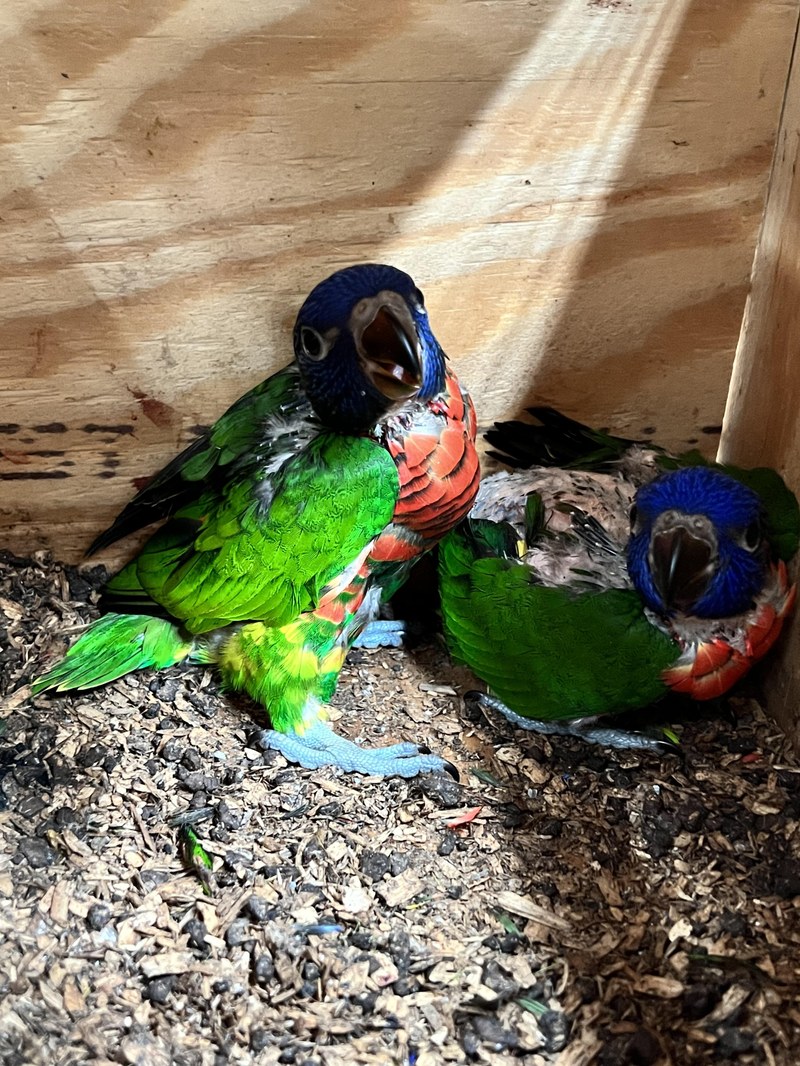
ABQ BioPark Grows Its Lorikeet Flock
Parents Gru and Tweedledum welcomed two chicks in July.
Sept. 8, 2022 - There are some new faces in the Zoo’s lorikeet flock. Mom Gru and dad Tweedledum welcomed two chicks in July! Gru laid her eggs between June 18 and 21, and they hatched on July 12 and 14.
“It’s always a fun time when you get new life and continue to grow your flock,” said Amanda Baca, senior bird keeper at the ABQ BioPark, adding that breeding activities show that animals feel secure in their environment.
To prepare the couple for their new arrivals, BioPark bird keepers provided them with nest boxes. They also left pine shavings and corkboard that the birds could use for nesting. After Gru laid her eggs, the two incubated them.
This is Gru and Tweedledum’s third clutch. Their first chick hatched in July 2020, and two more hatched in May 2021. The pair are coconut lorikeets, also known as green-naped lorikeets.
Baca said lorikeet parents are very protective of their nests. Once chicks are born, they continue to sit on them to regulate their body temperatures because lorikeets are born bald. Parents also spend their time feeding their young regurgitated fruit, veggies and nectar. Chicks leave the nest at around 50-60 days old.
A DNA test will need to be performed to determine the sex of the baby lorikeets, as males and females are undistinguishable by sight.
The ABQ BioPark is home to 23 lorikeets, representing three species: red lory, coconut and Swainson’s. Two live in the Birds of the Islands exhibit, while the rest currently reside behind the scenes until the opening of Australia Phase I.
Lorikeets are sometimes known as the clowns of the parrot world because of their fun personalities. Unlike most parrots, they drink nectar instead of consuming seeds. Special bristles on their tongues help them get that nectar out of flowers. Lorikeets still need protein, however. Here at the BioPark, they get their protein from peanut butter. They also love eucalyptus, Baca said.
